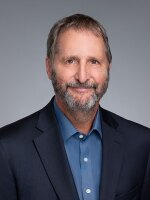One of the big questions before the California Legislature this year is what to do about high-speed rail. California voters approved some bond funding for a high-speed rail line in 2008. But since then the estimated cost of the system has ballooned to $100 billion. Republican Martin Garrick represents the 74th assembly district in north San Diego County. He is co-sponsoring a bill to put high-speed rail back on the ballot, so voters can change their minds. He spoke with KPBS Morning Edition host Tom Fudge.
Fudge: How did you vote in 2008, on Prop 1A (the bond measure for high-speed rail)?
Garrick: I voted no. And 48 percent of the voters of California also joined me in voting no.
Fudge: Why did you vote no?
Garrick: Because I didn’t believe that $9.9 billion in bonding, and the projected $34 billion cost was the true cost. I also didn’t believe the project was needed. But what I’m doing is taking the action an assemblyman can, to bring to the attention of all the voters the need to stop the funding of what I believe is a fantasy train we can’t afford.
A proposition could be placed on the ballot. We are proposing it – to put on the November 2012 ballot – for the removal of the 1A proposition that was passed in November of 2008. That would stop the bond issuing, and it would stop the train project completely.
Fudge: Do you think you have the political support in Sacramento to put this to the voters again?
Garrick: The budget situation in California is pretty desperate. Our economic times, with double-digit unemployment, are also pretty desperate. And we need to sit down and discuss with the Governor why he continues to push for a train, that has already increased in cost from $34 billion, just four years ago, to $99 billion today.
Fudge: Proponents of high-speed rail say this is a “green” technology that it would reduce greenhouse emissions and would be good for the environment. Do you accept that?
Garrick: I believe that greenhouse gases and the high-speed rail concept is a nice and wonderful thought. But it doesn’t move the number of people it needs to move in the state of California. It was originally projected to have 55 million passengers a year. The projections have dropped down to 35 million passengers a year, and that means a $1 billion loss in revenue to service those bonds. Now the price has gone up, but the number of passengers has gone down.
Fudge: High-speed rail, on the other hand, does seem to work in other parts of the world. It seems to work in Spain. It seems to work in Germany. In China, they’re building high-speed rail like crazy. What’s different about us?
Garrick: I believe both the number of people and the density in which those people live. Take France, for example. I believe France has 60 million people, and we have 38 million in the state of California. And, if I’m not mistaken, California is a larger geographic area than France. They have higher-density cities, and their high-speed rail travels between those cities that are much more densely packed.
Fudge: For California, if not high-speed rail, then what? We’re hearing from experts that the travel capacity for California will max out at some point, and we need some other way, some better way, to move people. Do we increase the size of freeways? What do we do?
Garrick: Well you’ve got 17,400 miles of both interstate and state highways. You have 30 airports. People want to get around and we have 38 million people. We want to continue to grow this state, both economically and otherwise. And we need to incorporate all the forms of transportation. The local rail systems, light rail, the local bus systems can be expanded. But high-speed rail is something we can’t afford today, and our children can afford to continue to pay for.






